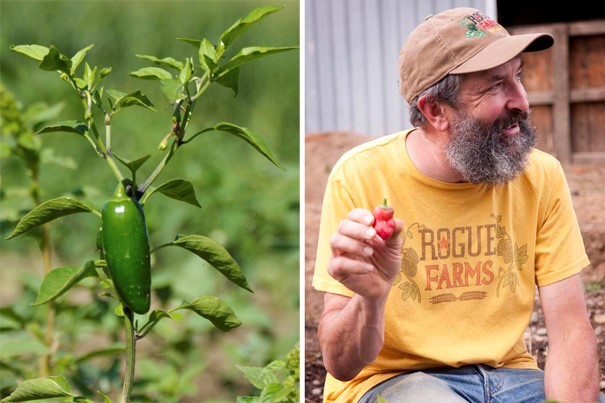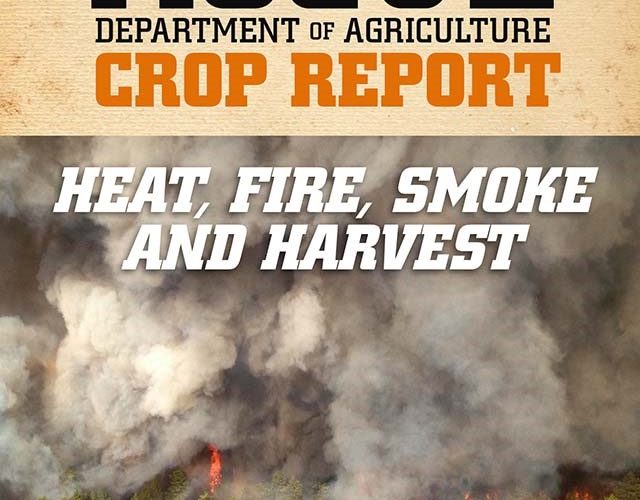Harvest season at Rogue Farms in Independence, Ore., began in July and has been in full swing ever since. Rogue Farms supplies Rogue Ales with homegrown hops, malting barley, rye, pumpkins, honey and other ingredients for their beer, spirits, cider and soda. Rogue Farm sends out a quarterly crop report and here you’ll find some highlights and updates.
The farm endured the full effects of Mother Nature this year, just barely avoiding the wildfires that roared throughout the Northeast. The County Line 2 fire, which burned over 67,000 acres, got uncomfortably close to the farm. Thankfully, no one was hurt in the fire, not even Rogue’s 200 acres of malting barley. The barley yields were brought down due to the heat and drought throughout the summer, but it was not a significant enough loss to upset the farmers.
Pumpkin Patch Ale
This was the fourth year of drought and the hottest year on record in Oregon, and the crops at Rogue Farms definitely felt the heat. On top of the warm weather patterns, the farm lost about 40 percent of its irrigation allotment, so everything was much drier than usual.
The pumpkins in particular had an unusually early harvest due to the high summer temperatures. Like many other breweries across the country, pumpkin beers were on the shelves much earlier than usual. It was the earliest ever that Rogue Ales and Spirits has been able to ship out its Pumpkin Patch Ale, kicking off the fall season with a bang.
Rogue Farms Chipotle Ale
October at Rogue Farms means harvest time for their one acre of jalapeño peppers. The peppers start off in the greenhouse and are carefully tended to in order to get the perfect taste. They make sure to leave them on the vine until they are fully ripened, giving them more flavor than spice, which is better for dry smoking into chipotles.
Rogue Farms has a very “do it yourself” philosophy which is displayed greatly their jalapeños, the key ingredient in the Rogue Farms Chipotle Ale.
“It’d be easier and faster to buy someone else’s peppers, or import capsaicin extract from China. But that wouldn’t give us the quality and flavor we want, so we do it ourselves.” – Rogue Farms summer crop report
Hop Production
Hops are a major crop at Rogue Farms, and thankfully they were minimally effected by the heat this summer. Hop production in Oregon alone is up 41 percent in 2015 according to the USDA, mainly due to increasing acreage and yields. Hop acreage in the Pacific Northwest grew by 16 percent from 2014-2015.
According the Brewers Association, annual hop production must increase to 90 million pounds by 2020 in order to fulfill the demand for hops by craft breweries, and Rogue Farms is paving the way.

“At Rogue Farms we know what it’s like to dare to grow our own ingredients instead of buying them from someone else, and to accept the risks of being farmers. We do this as we follow our dreams of bountiful harvests and of world-class beer and spirits yet to be mashed, brewed and distilled.” – Rogue Farms summer crop report
Keep on keeping on Rogue Farms! We’re all taking note.
CraftBeer.com is fully dedicated to small and independent U.S. breweries. We are published by the Brewers Association, the not-for-profit trade group dedicated to promoting and protecting America’s small and independent craft brewers. Stories and opinions shared on CraftBeer.com do not imply endorsement by or positions taken by the Brewers Association or its members.


Share Post